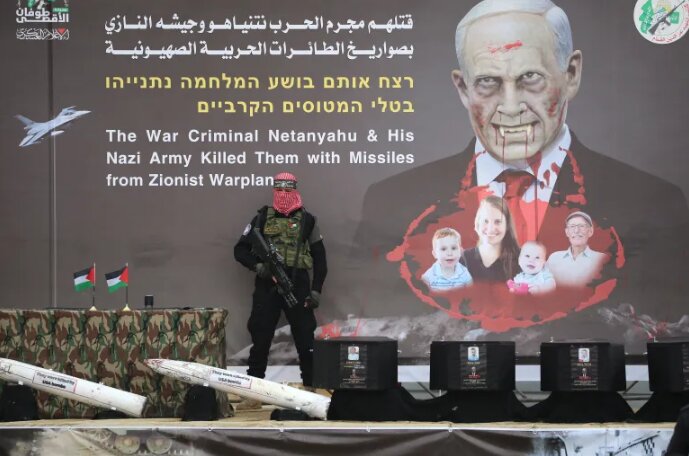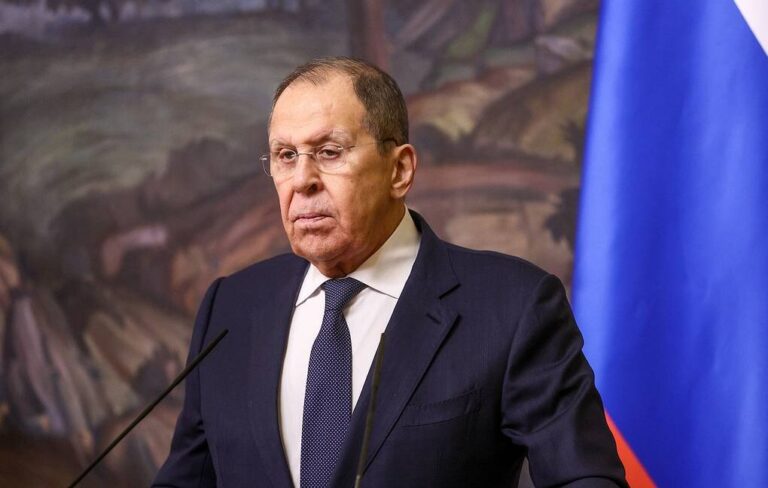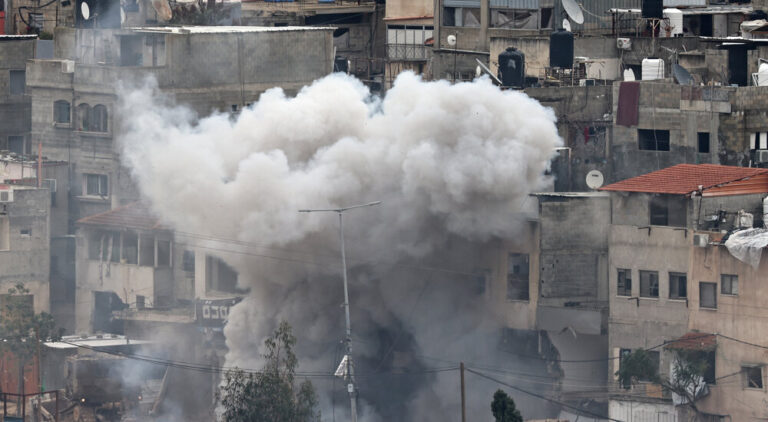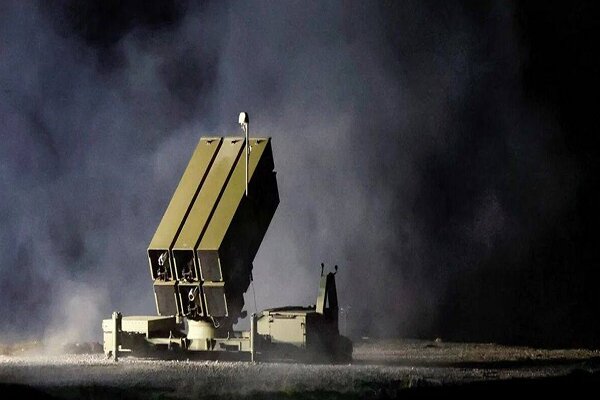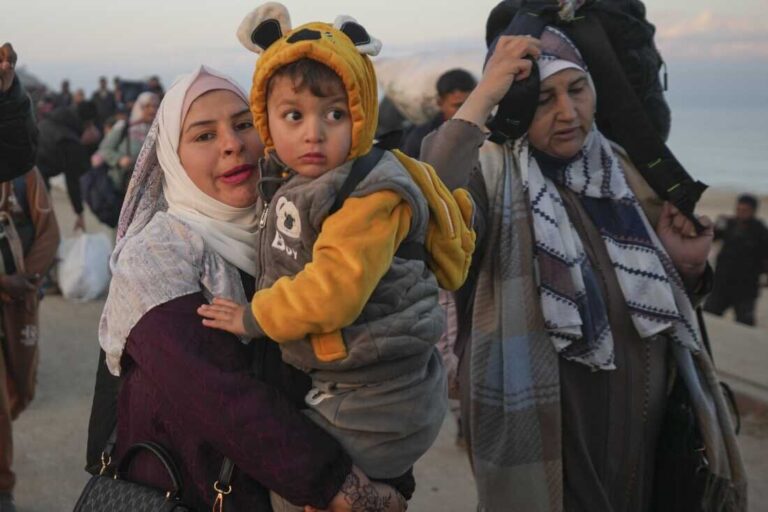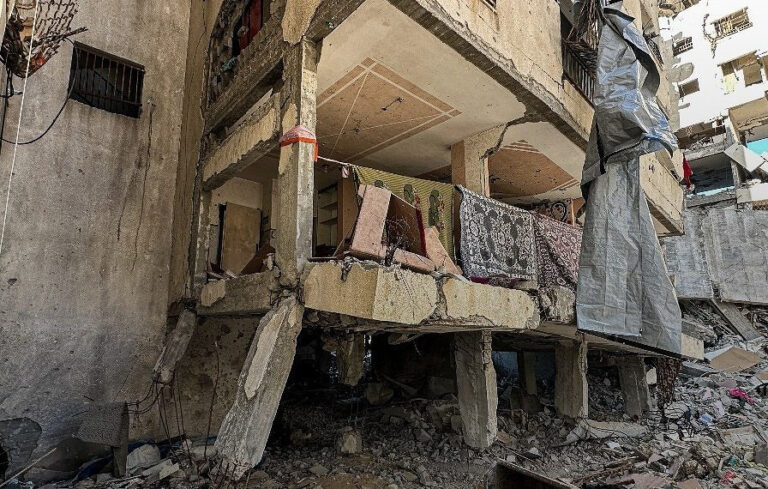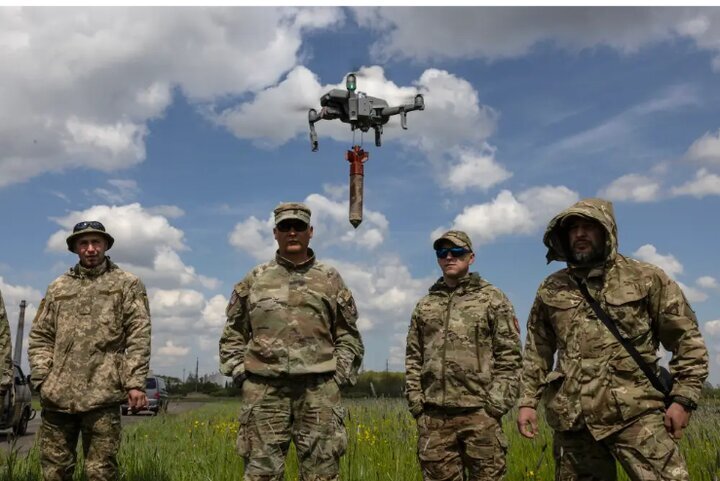Hamas Returns Bodies of Israelis: A Tense Moment Amid Gaza Conflict
The recent developments in Gaza highlight the ongoing complexities of the conflict, particularly regarding the management of remains and the implications of ceasefire agreements between Hamas and Israel. The return of bodies has sparked significant reactions and discussions surrounding the humanitarian aspects of this situation.
On Thursday, the International Committee of the Red Cross (ICRC) received the bodies in Khan Younis, located in southern Gaza. This event draws attention to the broader implications of the ongoing conflict and the sensitive nature of such exchanges.
During the handover, a striking poster was prominently displayed, depicting Israeli Prime Minister Benjamin Netanyahu with exaggerated features, including fangs and blood on his face, which dripped onto images of four Israelis whose bodies were returned. This imagery underscores the deep-seated emotions and narratives surrounding the conflict.
A spokesperson from the Palestinian group stated that all four individuals were alive before the “Zionist occupation aircraft deliberately bombed the locations where they were being held.” This claim emphasizes the ongoing tensions and allegations of military actions contributing to the loss of lives.
The return of these bodies is part of a broader ceasefire agreement between Hamas and Israel, which also involves the release of hundreds of Palestinians from Israeli prisons. Many of these individuals have been held without charges or trials, raising significant concerns regarding human rights and due process.
In a notable statement, a Palestinian group reported that Israel is withholding the remains of at least 665 Palestinians, including several who were killed during the 1960s and 1970s. This statistic highlights the longstanding issues surrounding the treatment of remains and the broader historical context of the conflict.
According to Al Jazeera’s Tareq Abu Azzoum, who was reporting live from Khan Younis, the site holds symbolic importance for Palestinians. He noted, “the site is symbolic for Palestinians because it was a central site for Israeli ground forces during the military operations in the city.” This statement reflects the ongoing struggle for recognition and justice among Palestinians.
Preparations for the event began early in the morning, with masked fighters donning green bands on their heads, armed with rifles, and holding various signs featuring slogans. The atmosphere was charged with emotion as the stage was meticulously arranged, featuring three main banners. One of these banners focused on the alleged crimes committed by Israeli forces during their operations in Gaza.
The return of the bodies and the accompanying demonstrations highlight several key points about the ongoing conflict:
- Humanitarian Concerns: The exchange of remains raises questions about the treatment of detainees and the need for humanitarian considerations in conflict.
- Symbolism: Sites like Khan Younis are laden with historical significance, representing the struggles and narratives of the Palestinian people.
- Ceasefire Agreements: Such agreements often come with complexities, including the release of prisoners and the return of remains, reflecting the intricate dynamics of negotiations.
- Historical Context: The withholding of remains from past conflicts adds another layer to the ongoing tensions, calling for acknowledgment and resolution.
As the situation continues to evolve, the implications of these events will likely resonate deeply within both Palestinian and Israeli communities. The narratives surrounding these exchanges will shape public perceptions and influence future discussions about peace and reconciliation in the region.
In conclusion, the handing over of bodies in Khan Younis is not merely a logistical event but a poignant reminder of the deep-rooted issues at play in the Israeli-Palestinian conflict. Both sides of the conflict must navigate these sensitive matters with care, as they hold significant emotional and historical weight for those involved.
